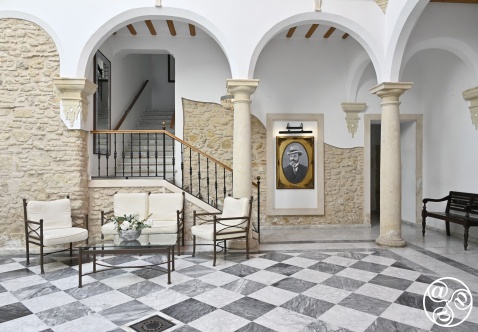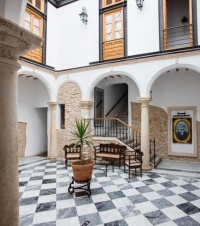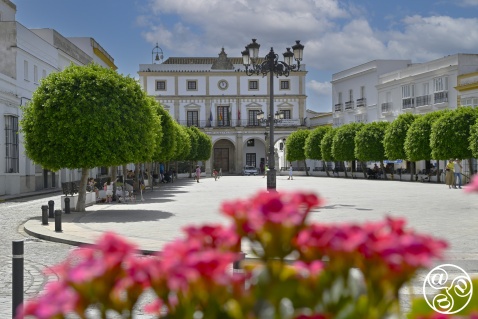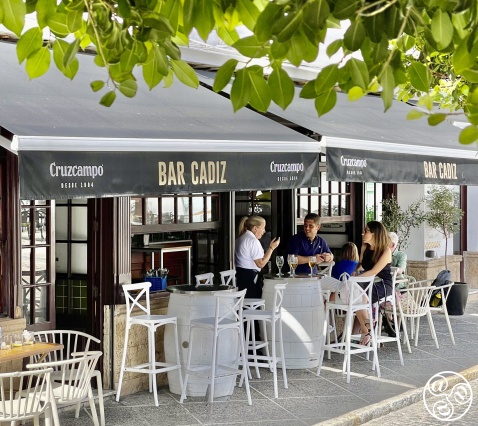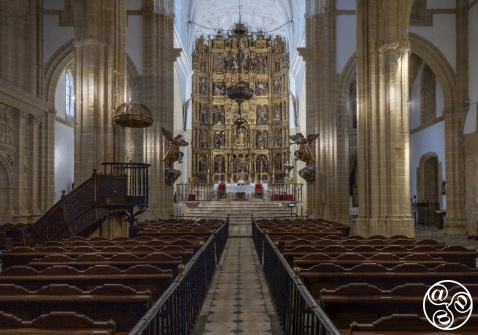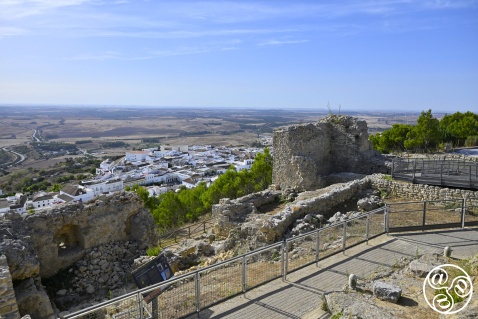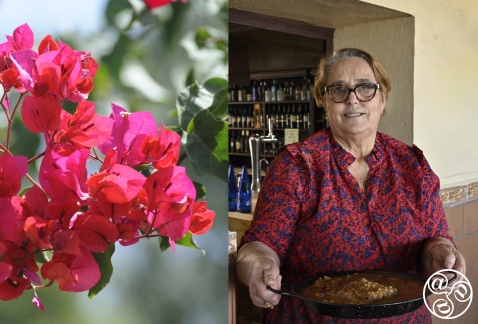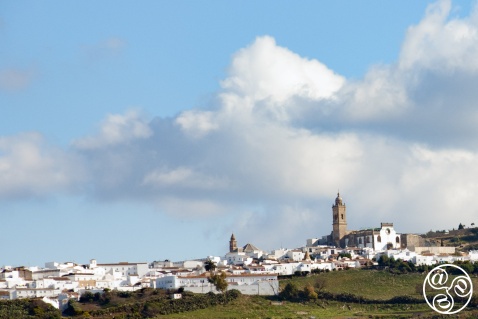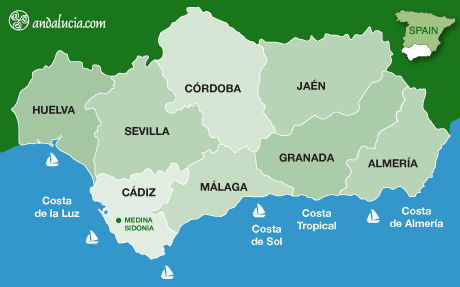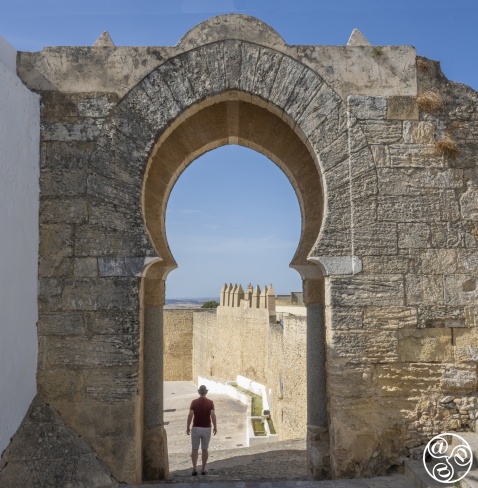
Arco de la Pastora (Arch of the Shepherdess), Medina Sidonia © Michelle Chaplow |
|
Medina-Sidonia
Medina Sidonia is an unspoilt, ancient hilltop town, little-known despite its important history. During Roman times, this important town was known as Asido Caesarino.
In the 15th century, the town was one of the oldest and most important ducal seats in Spain. It produced an admiral who led the Spanish Armada against England. The family of the Duke of Medina Sidonia can trace their ancestry back to Guzmán El Bueno (1265–1309), who is renowned for his valiant actions during the siege of Tarifa. Until recently, the title was held by the controversial socialist Duchess of Medina Sidonia (1955–2008), also known as the Red Duchess. She lived in the family home in Sanlucar de Barrameda. The present 22nd Duke of Medina Sidonia, Leoncio Alonso González de Gregorio, is a professor of history at the University of Castilla-La Mancha. This fascinating, picturesque village has medieval walls and narrow, tidy cobbled streets flanked by rows of reja-fronted houses.medina Sidonia has a population of about 12.000.
Medina Sidonia - Hotels
Book hotels in Medina Sidonia
Sights to See
Plaza de España
This elegant, rectangular plaza has plenty of public seating and is surrounded by handsome, three-storey buildings. The town hall is located on the south side. The popular Bar Cádiz and other bars are located here. The main street, Calle Virgen de la Paz, which is pedestrianised, leads away from the north side. Here you will find the tourist office and the Mercado de Abastos.
The Town Hall
The 17th-century, Mannerist-style building, which was designed by Andrés Cárdenas, dominates the rectangular Plaza de España. Construction of the three-storey Baroque building began in 1673. The ground-level façade features six stone columns and five circular arches forming a central portico. The right-hand arch forms a narrow vehicular access route to the Plaza de la Libertad. The second floor is in the Neoclassical style and features a balcony running from end to end, as well as windows crowned by triangular pediments and separated by pilasters.
The top floor is a 19th-century addition, featuring four set-back windows with stone frames and a central clock. The building is topped with the city's stone coat of arms. An adjoining building has been renovated to house the city's administrative offices. The 18th-century building is used for plenary sessions and important events.
Santa Maria la Coronada Church
Built on the foundations of the original castle and later a mosque, this church is a fine example of Andalusian Gothic architecture. Inside there is an enormous 15m-high exquisite alterpiece, depicting scenes from the life of Christ. There is also a fine sculpted image of Cristo del Perdón attributed to Luisa Roldán, and several 16th-century benches that were apparently used by the Inquisition.
Archeological Museum
You can view and walk through some remarkable Roman sewers at the Archaeological Museum on Calle Ortega, 1. Dating from the 1st century AD, these sewers stand over two metres high and are a testament to the skill of Roman engineers. Comprising a total of 20 metres of underground galleries indicating the degree of urbanisation of the city of Assido-Caesarina. These large sewers are located on the outskirts of the city and are where all the smaller sewers converge. They have sandstone block walls and barrel vaulted ceilings. The original floor is waterproofed with a layer of crushed ceramic mixed with lime. Barriers on both sides prevent dirty water from seeping through the walls. Circular manholes in the vaults connect directly to houses.
A section of a Roman road, discovered in 1997, runs partly four metres below Álamo Street. Built with large stone slabs, it consists of two pavements and a five-metre-wide carriageway, which is wide enough for two vehicles to pass each other. Along the centre line of the road, beneath the paving, there is a sewer almost one metre high which channelled rainwater and wastewater from buildings and fountains in the city. Engraved game boards were noticed on the slabs of one of the pavements. Visits to the road start from the Archaeological Museum at 1.45 pm.
Opening hours: Mon to Wed 10:00–14:00 hrs; Thurs to Sunday 10:00–14:00 and 16.30 to 18.30 hrs. Entry costs €3.50, and children under 12 go free.
Museo Etnográfico - (Ethnographic Museum)
This museum of local customs is one of the best of its kind in Andalucia. You can see for yourself how villagers in Medina Sidonia lived in the past, through the practical tools and objects they used for work and everyday life. Wander around at your leisure and use your phone as an audio guide to navigate your way through the rooms.
Over a thousand items are on display, all of which were donated by villagers. These include farming tools, handicrafts and examples of the differences in lifestyle between the bourgeoisie and servants. There are also tools from old trades, such as shoemaking and baking, as well as models of huts, corn shellers and a reconstruction of a schoolroom with a blackboard.
Opening hours: Thursday 12:00–14:00; Friday to Sunday 10:00–14:00. Entry costs €1.50, and children under 12 go free.
Three Moorish arches
Medina Sidonia also has three Moorish arches that were once city wall gates including the magnificent Arco de la Pastora.
Castle Archaeological Site
Medina Sidonia Castle stands at the top of the hill overlooking the present town. Strategically located at the highest point of land in the La Janda district of Cádiz province, it stands 380 metres above sea level. Archaeological work carried out here indicates the existence of three overlapping fortifications: the remains of a Roman military fort, an Arab fortress and a medieval castle. There is also the evidence of our use of the site as a 19th-century quarry.
Remains from the Bronze Age
The site contains remains that indicate human presence on the hilltop dating back to the Late Bronze Age. These include various types of handmade ceramics, as well as polished stone tools such as axes and mortar pestles, and carved tools such as sickle teeth. Other pottery remains with red slip and fragments of amphorae are sometimes found alongside these, which clearly indicate the Phoenician-Punic presence, albeit indirectly.
Roman military castellum
Construction of the military castellum began under the Romans. Most of its walled perimeter has been unearthed and is preserved to a height of over two metres in places. The eastern side, which is almost 60 metres long, features six small, solid buttress towers spaced at regular intervals. To the south, two hollow quadrangular towers measuring approximately 10 metres on each side are located at the south-east and south-west ends. One working hypothesis is that the moat on the northern side, which is almost 10 metres across and more than 8 metres deep and has escarpments carved into the hill's geological terrain, is associated with this Roman defensive building.
Arab fortress
In the 11th century, the Almoravids built a new castle on this site. This time, it was made of rammed earth, and some sections of it can still be seen in situ. Various pieces of wall that have fallen outside the fortress can also be seen.
Medieval castle
Construction of a new castle began in the mid-15th century at the behest of the First Duke of Medina Sidonia, who wished to improve defences. The new fortress, with its first section featuring rough ashlar, rubble masonry and alambor as a new poliorcetic feature following the introduction of firearms, was attached to the remains of the Muslim rammed earth castle.
Opening hours
Winter (from 15-09): Mon to Wed 10:00 to 14:00; Thur to Sunday 10:00 to 14:00 and 16.30 to 18.30 hrs.
Summer (from 16-06) Everyday 10.00 to 14:00 and 19.00 to Sunset.
Entry costs €2.00, and children under 12 go free.
Restaurants
If you're looking for one of the best restaurants in the area, with undoubtedly the best views, head to La Vista de Medina, located opposite the magnificent Iglesia de Santa María la Coronada. The south-west-facing terrace offers spectacular views, and the enchanting dining rooms provide an ideal alternative on days when the sun isn't shining. There are a handful of bars around the elegant Plaza de España, including the charming La Cervecería, which is tucked in between Bar Cádiz and Bar Ortega. If you're looking for something more formal, check out the Hotel Duque, which specialises in excellent meat dishes, including hearty local game.
Restaurante Castillo, Calle Ducado de Medina, 3. This family-run restaurant is lovingly overseen by the matriarch, Doña Manuela, who can often be found working in the kitchen. People come from far and wide to sample her famous arroz con pollo, a supremely tasty dish whose rich flavour comes from onions, garlic, bay leaves and superb chicken stock, and which takes time to cook. Expect no frills, just generous portions of traditional Spanish cuisine lovingly prepared.
Parking
The best place to park for the centre and Plaza de España is the La Zapata public car park (GPS coordinates: 36.45578, -5.9286), located in Plaza de la Zapata. Approach from the south on Calle Vejer. Approach from the north on Calle Álvaro Garrido. An alternative car park is located on Calle Cigara. To reach the top of the old town, enter from the north-west via the CA-2092 and the Puerto del Sol arch. There is a smaller car park here. (GPS: 36.459628, -5.92608). You can also park by the castle via the Ducado de Medina Sidonia approach.
The Puerto del Sol also leads to the Plazuela de las Descalzas and down the Calle San José, where there is a free municipal car park on the Calle Tintoreros (GPS coordinates: 36.45818, -5.926550) for the exclusive use of hotel residents displaying the badge provided by reception upon check-in. The nearby Hotel Medina Sidonia (Tugasa) has a loading/unloading bay outside the door and offers assistance with parking in Calle Tintoreros.
